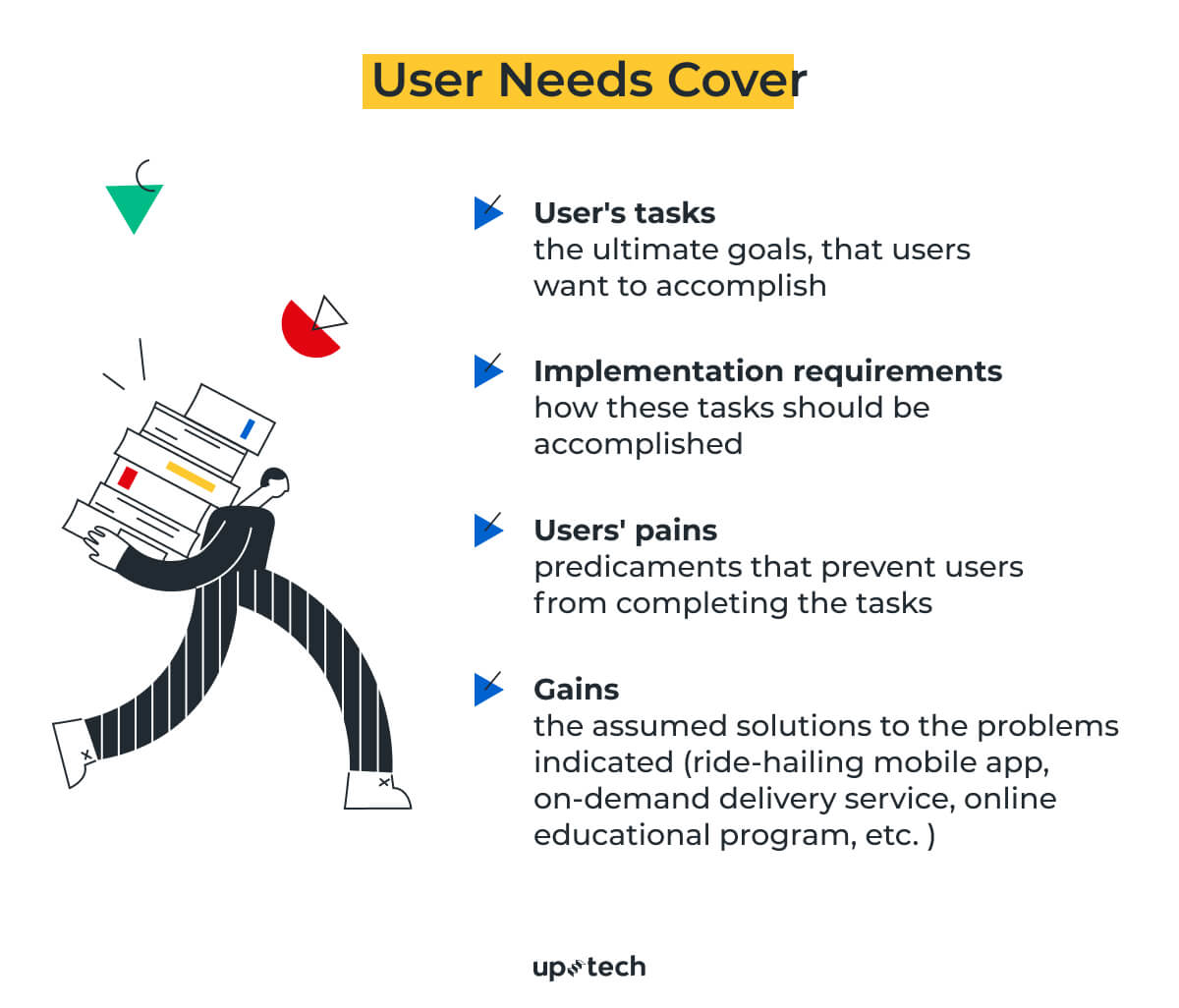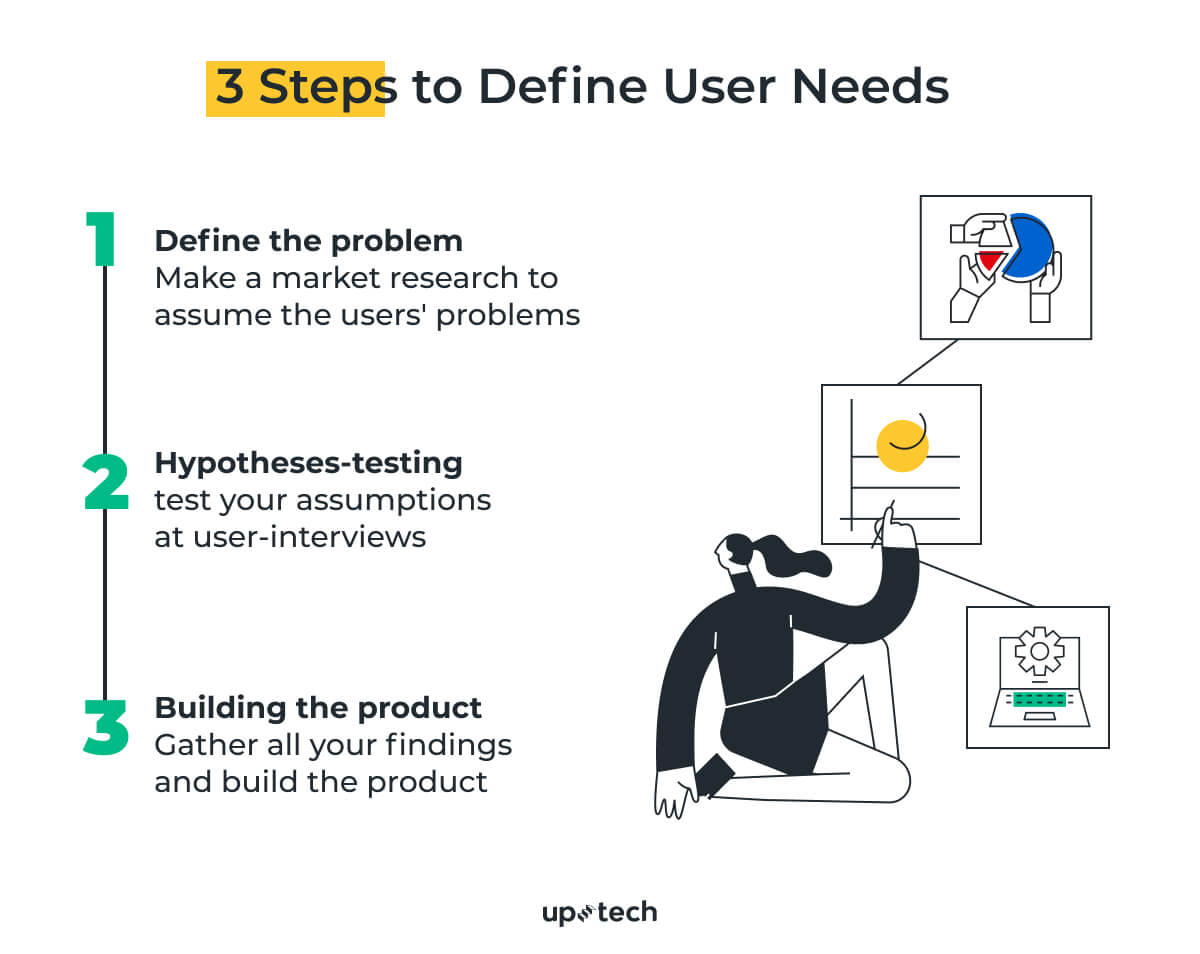When starting a journey of building a new product, the focal question that claims to be answered is "what are the real user needs?".
The surprising thing is that most product owners would answer they perfectly know their audience's needs or at least they have intuitive assumptions. However, the statistics suggest otherwise. According to the CBinsights report, the lack of market need accounts for 42% of the 20 reasons for startups' failures. The thing is many know the users’ needs, but such assumed needs are not always real.
I’ve come a long path of complicated projects to finally understand how to define real user needs and use them in product development. In this blog post, I will use the case from my practice to explain the term "real user needs" and what the team can do to define them.
What Are User Needs?
One winter night in 2008, a couple of men could not take a ride home after a late conference in Paris. Though their evening was ruined, they got an exclusive insight – "What if you could request a ride from your phone?". This is how the story of Uber began.
The concept of a ride-hailing app was thus a reply to the newly discovered user need – get from one point to another fast, affordably, and quickly (by request on one's mobile phone).
"User needs" is thus an umbrella term, covering such components as:
- Tasks the users need to complete (get home, order food, educate a baby, etc.);
- How they need to complete them (fast, easy, effortless, instantly, on-demand);
- Pains that prevent users from completing the tasks (unavailable cabs, busy schedule at work, massive lockdowns, etc.);
- Gains – the assumed solutions to the problems indicated (ride-hailing mobile app, on-demand delivery service, online educational program, etc. )

All these requirements are subsumed in a document called Problem Statement. This is a deliverable of the research stage that identifies the target user and the particular problem that hinders him/her from completing the task (desired outcome).
Why Make Sure If User Needs Are Real?
According to the Nielsen Norman Group Guide, users' needs should be "real". This means they should not be simply intuitive assumptions as to the problem the product should solve. As practice shows, however great your solution might be, it is doomed to failure if it solves a wrong problem.
A vivid example of such a "grandiose" failure is the destiny of Google Glass – the innovative hands-free device. The developers mistakenly assumed that the product would thrive as a visionary device to wear in public. Others supposed it would be used for specific utilitarian functions or as a fashionable device. So generally, the development team had no consensus on what the distinct use cases of the glass could be.
Despite the brave effort to step into the new age of development, the Glass did not live up to the hype. The main reason for this outcome was the lack of the specific user problem that the product solved. So it does not suffice if a product is simply visionary. It should primarily aim to solve a user’s problem.
3 Steps for Defining Real User Needs

Defining user needs is an integral part of the product development process at Uptech. During the five years of experience, we have crystalized an algorithm of steps that we follow during the product discovery stage. I want to use the example of our recent case Nomad to showcase this algorithm in steps.
Step 1. So what’s the user problem?
At the first step of the product development, the team should try to identify the focal user problems in this product area. It takes profound market research, location analysis, competitors examination to figure out two things:
- the main problem that needs solving;
- how the problem is being solved now.
Once crystallized, these assumed problems turn into hypotheses that will be validated further.
Working on the Nomad, the real estate platform in Dubai, we already had valuable insights about the user's problems after the market research. The issue of fake realtors' profiles, frauds, troublesome communication with the agents are the main pain points of the real estate market in Dubai.

Step 2. Are the problems’ hypotheses true?
The next step in defining the users' needs is testing the hypotheses, which usually involves interaction with the potential users. The interaction can be carried out in various forms: user interviews or short surveys in social media. Such a test aims to validate the problems' hypotheses defined earlier and understand if these problems are real.
At Nomad we conducted several interviews and surveys, and the majority of the assumed issues about the Dubai real estate market proved real and, besides that, new insights unraveled.
Expert's Tip: The purpose of user tests is not to confirm your hypotheses. Instead, by testing the assumptions, we challenge them and make sure they respond to real user needs. Therefore, during the user interview, you should ask a user an open question without hinting at the expected answer.
As a result of this stage, we made a list of user needs that we need to bring a solution for:
- Build a platform that will deliver quality service with a pool of authoritative agents and credible accounts;
- Simplify the paper routine and provide support to clients in communication with agents;
- Make a minimalistic and simple UI design that would be more user-friendly than other solutions on the market.
Step 3. Build and Test the Solutions
After the problem hypotheses are validated, we continue with building product prototypes to solve these problems. At this stage, these solutions turn into the product's features that also need to be validated further.
Expert's Tip: Build the solutions with user needs in sight. Do not try to build as many features as possible. All the functionality of your product should be fully user-centered or provide a specific benefit for the user.
It usually happens that after prototype testing, many decisions adopted earlier will be declined. For example, we had to cancel the integrated calendar for booking apartment reviews because a user may wish to review several apartments simultaneously. So it's okay to refuse some decisions.
Expert tip: In fact, not every feature of the product should be tested. Some categories of apps have a basic list of core features that stay unchanged from platform to platform.
For example, one can hardly imagine a real estate platform without search filters, listing feed or "Favorites". So do not waste time validating these items.
.png)
Summary
Defining user needs is an effort and time-consuming process. Yet, its value to product development can hardly be exaggerated. Without the proper user needs analysis, it is impossible to make a product that will be useful for users, and therefore, financially successful.
As a product manager, I am always open to new challenges at new projects. Contact me to discuss how we could work with your idea.



















































































.avif)
















